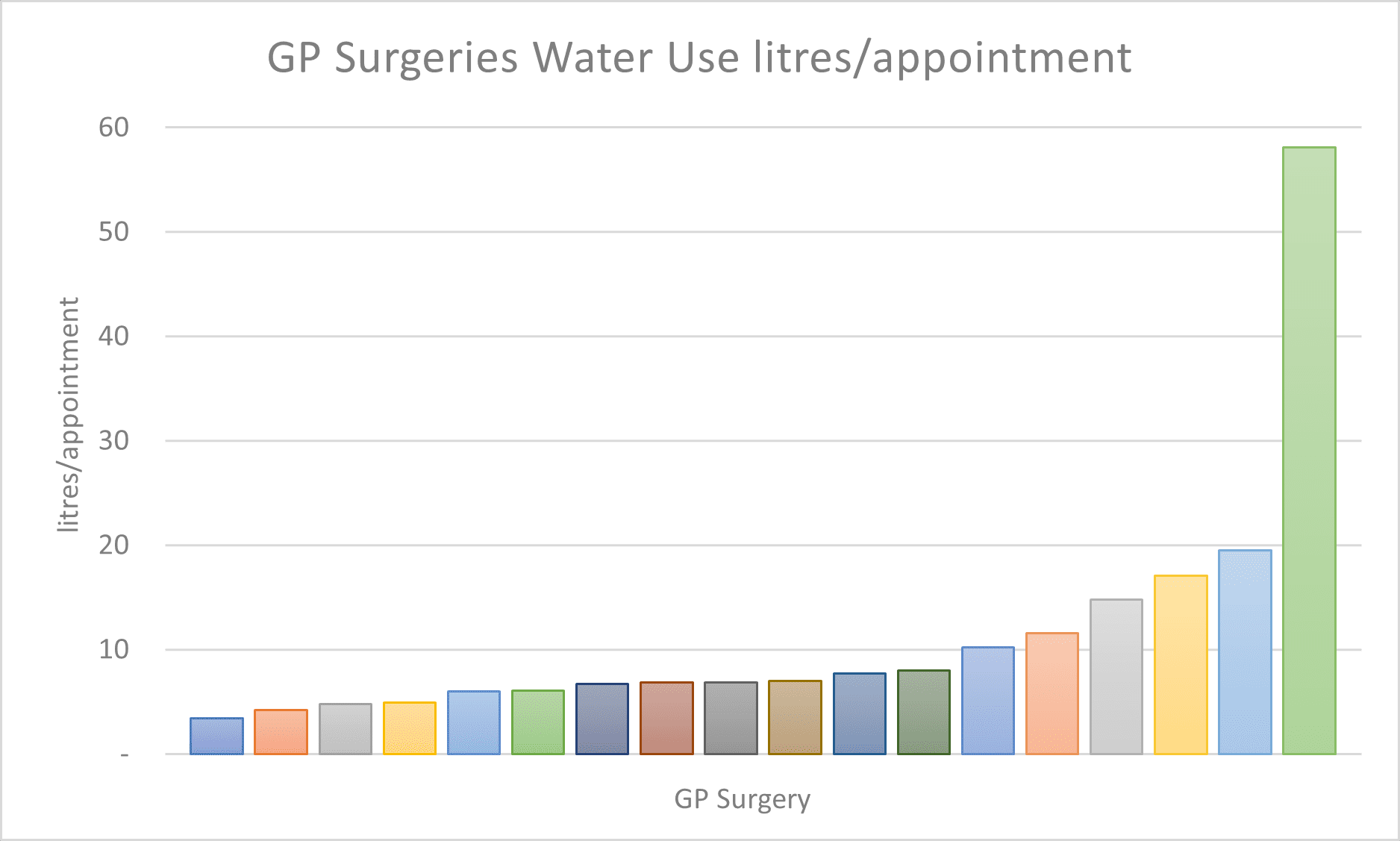
We were delighted to be selected last year to deliver a project on behalf of several Primary Care Networks to carry out environmental surveys at their GP surgeries. For each surgery we looked at carbon emissions resulting from their energy use, including an assessment of lighting and heating systems, and then produced a roadmap to net zero. Our site surveys also looked at water efficiency, including current consumption and recommendations for efficiency measures.
The surgeries were really helpful and supportive of the project, making time to facilitate access for us to survey their (very busy!) buildings and providing data on their energy consumption. As well as providing each surgery with a full written report on our findings and recommendations, we used the overall data to prepare comparison charts so that environmental performance could be viewed in contrast with that of peers.
The anonymised chart below compares the total carbon dioxide equivalent emissions, using the area (m2) of the surgery as the unit to calculate the intensity. Intensity enables us to benchmark and allows progress monitoring towards long-term aims, even if an organisation changes in size (gains more office space, for example).

For water use, we selected the annual number of appointments to calculate intensity (as not all buildings were metered there are fewer results in the chart below, however for all surgeries we were still able to survey water efficiency, including flow rates and water saving measures):

Here at SHIFT we are committed to delivering excellent service to our clients and we recognise that the ultimate test of the quality of that service is our client feedback. So at the completion of all projects we ask the questions:
On a scale of 1-10, how much has/will the project contribute towards environmental improvements (0 being no influence and 10 being fundamental to improvements)?
Would you recommend us to other organisations looking to complete a similar project?
We received feedback from our contacts representing 11 surgeries, all of whom said that they would recommend us to other organisations. And their average score for the contribution the project will have made to environmental improvements was 6.25; according to academic research, anything greater than 1.4 out of 10 demonstrates an excellent contribution [1].
In more detail, it was also reported from one PCN that our report had been very helpful in achieving a Green Impact award and encouraged partners to invest in solar panels – the kind of tangible benefits we design our projects to enable.
If you would like to discuss an environmental survey of your buildings covering energy, water use or any sustainability measure, then please be in touch.
Image by Greg Rosenke on Unsplash
[1] Longbottom, D. (2000), “Benchmarking in the UK: an empirical study of practitioners and academics”
